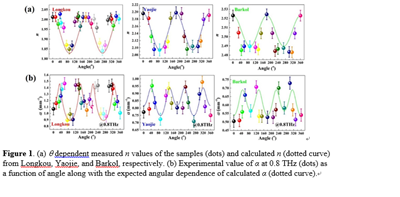
Xinyang Miao
China University of Petroleum, China
Title: Anisotropic optical response of oil shale at Terahertz range
Biography
Biography: Xinyang Miao
Abstract
Oil shale, a finely grained sedimentary rock with kerogen contained, has been gradually developed in China since the 1920s. Numerous oil and gas products as fuels and raw materials in petrochemical industries can be yielded by pyrogenation of kerogen. Generally, shales as well as oil shales are often highly anisotropic owing to various combined effects. Ultrasonic measurements have demonstrated that the elastic properties are isotropic in the directions parallel to the bedding, while anisotropic in other directions. Owing to the unique advantages, Terahertz (THz) technique has been applied in various research areas of oil and gas exploration recently, including exploration and development of oil and gas reservoirs, transportation of oil-gas as well as evaluation of petrochemicals and pollutants. Meanwhile, THz technique has also been employed to study the anisotropic response of materials. In this paper, THz technique was employed to investigate anisotropic response of oil shales from Longkou, Yaojie and Barkol with different oil yield. All the samples had significant anisotropy of refractive index (n) and absorption coefficient (α) with symmetries at the location of 180°, which were corresponded with the bedding plane and the partial alignment of particles. Besides, the D-values of experiment n in the vertical and parallel direction of the bedding plane were calculated as Δn’= n^-n‖, and samples from Beipiao and Huadian were also tested in the horizontal and vertical directions for a sufficient number of THz parameters. Linear regression was built between the Δn’ of the samples from five regions and the oil yield, described as y=60.86x+3.72 for oil yield (y) and Δn’ (x), with the correlation coefficient R equaled 0.9866 and the residual sum of squares was 1.182, indicating THz technology could be an effective selection for evaluating the oil yield in oil shales from different regions.


